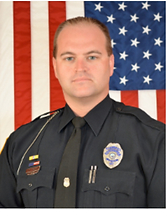Leaving Your Mark
-The art of claiming your urban environment-
Our right to the city starts with how we live within our urban spaces. Lefebvre argues in "The Urban Revolution," that one must claim the city for it to be a successful urban space. In this photo concentration, I seek to prove the importance of street art as a connection to the City.

This image expresses the different strengths that we each possess. The artist was trying to convey "Zen."

A political statement that I "trumped" with view of a women's relaxed legs waiting for the future.

This photo shows how self expression can be made in mass production. Stencils serve as a key to an artistic world.

Advertisements can sometimes be a part of an urban space, making them available to be changed due to there openness.

Promotion of events are a staple for campus street art.

Having a space to express how you feel, is something this couple showed with an engraved lock.

Using your power of self expression to benefit others. Hopscotch anyone?


The Stories:

Jack Coon
Freshman, Computer Engineer
Univercity of Florida

Ben Tobias
Spokesman for the
Gainesville Police Department
"IT'S SOMETHING THE COMMUNITY CAN BOND OVER...IT'S SOMETHING WE ALL HAVE"-cOON
When I started this project I wanted to find out what role Graffiti was playing in the claiming of an Urban environment and how people were able to express this unique privilege our city is allowed.
The Location:
Norman Tunnel
Crosses Underneath 13th street

"An ever changing Canvas"
-Sean Plemons
Content Manager for Visit Gainesville

The Theory:
A key aspect of Lefebvre's theory is the claiming of urban spaces. The theme of his work is to create a sense of community among its residents.In Gainesville, the unusual presence of graffiti-tolerated spaces provides students and residents a way to claim this urban space, our campus, for their own. For many students, like Jack Coon, it serves as an artistic calling. Sean Plemons of Visit Gainesville receives calls for people seeking out the street art that it is, in fact, something that brings people to this area. Sergeant Tim Peck from the University of Florida Police Department explains that graffiti at Norman Tunnel, much like the 34th Street wall, "was something that started a long time ago, and it has remained an unwritten rule that it’s allowed there." It's a tradition that has been intact since the early ’90s. All of these statements serve as our key to the city. It shows the importance that street art has
on people's connection to the city. It's a place where people feel they can be heard through an intimate expression of what they stand for. Art has always been held to a high standard in our culture. So if Lefebre is right and claiming your urban space is necessary for it to thrive then it only fits the bill that graffiti walls like Norman Tunnel should be allowed in other cities, states and countries. For it serves as an interactive key to a stark and concrete facade otherwise.

The Class:
 |  |  |  |
|---|---|---|---|
 |  |  |  |
 |  |  |  |
 |  |  |  |
 |